Abstract
Two and occasionally three electrophoretic subpopulations of polymorphonuclear cells (PMNs) were identified in the blood of normal healthy subjects and patients with rheumatoid arthritis (RA). Most of the PMNs from both groups of subjects were found in the population with the highest surface charge; the remainder being in the other distributions, which were collectively termed the slow cell population. There was a significant increase in the percentage of rheumatoid PMNs (mean 42%) ascribed to the slow population when compared with PMNs from normal subjects (mean 17%). A similar increase in the slow cell population was also seen in patients with Felty's syndrome (mean 38%) and scleroderma (mean 51%), but not in patients with Behçet's syndrome (mean 18%). Synovial fluid aspirated from the knee joints of patients with RA contained PMNs with the lowest surface charge. With nylon fibre as an adherence substrate cells of a low surface charge were found to be more adherent than those of a high surface charge. An alteration in the electrophoretic distribution of PMNs may represent changes that are related to the expression of functionally related membrane ionogenic groups.
Full text
PDF
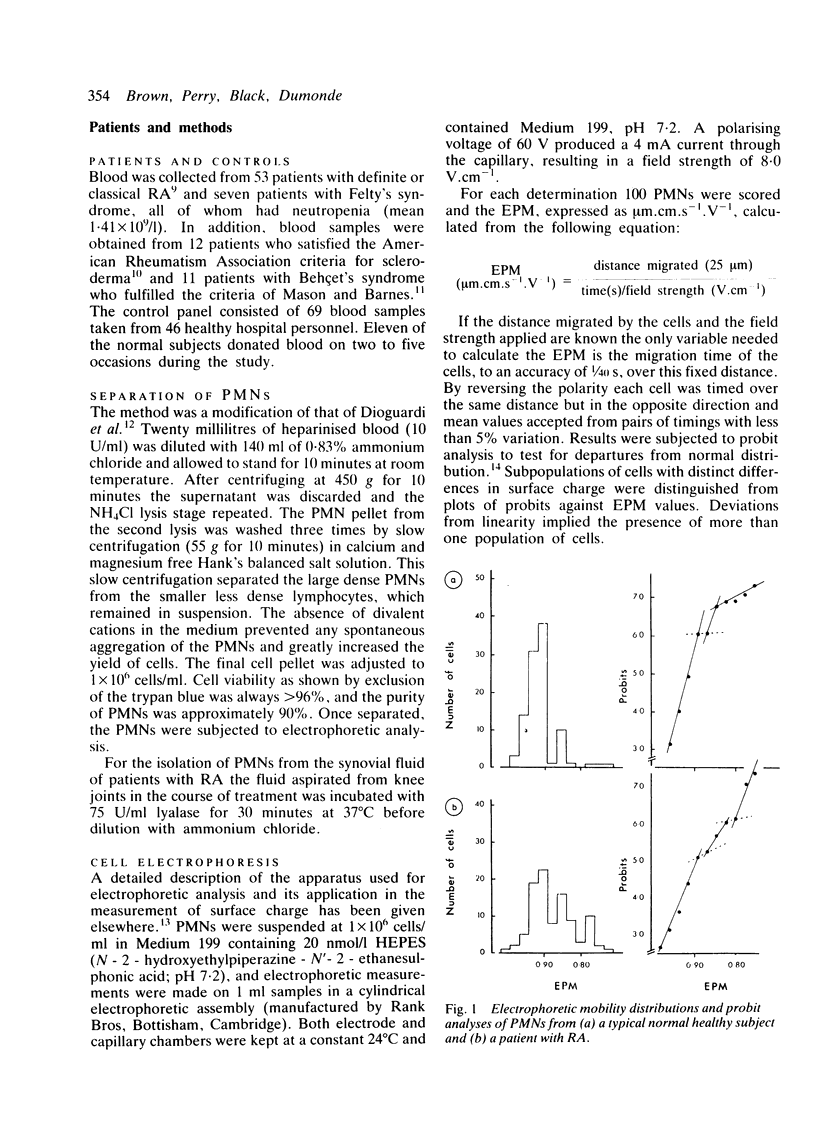
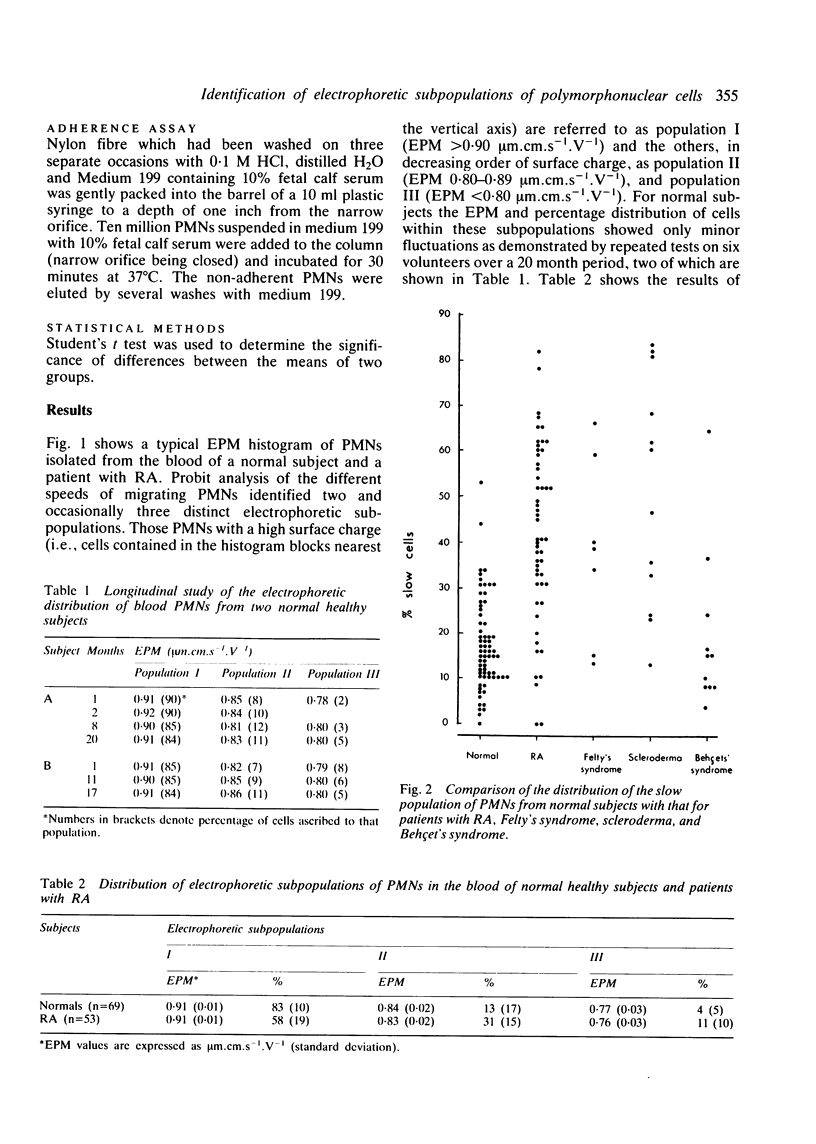
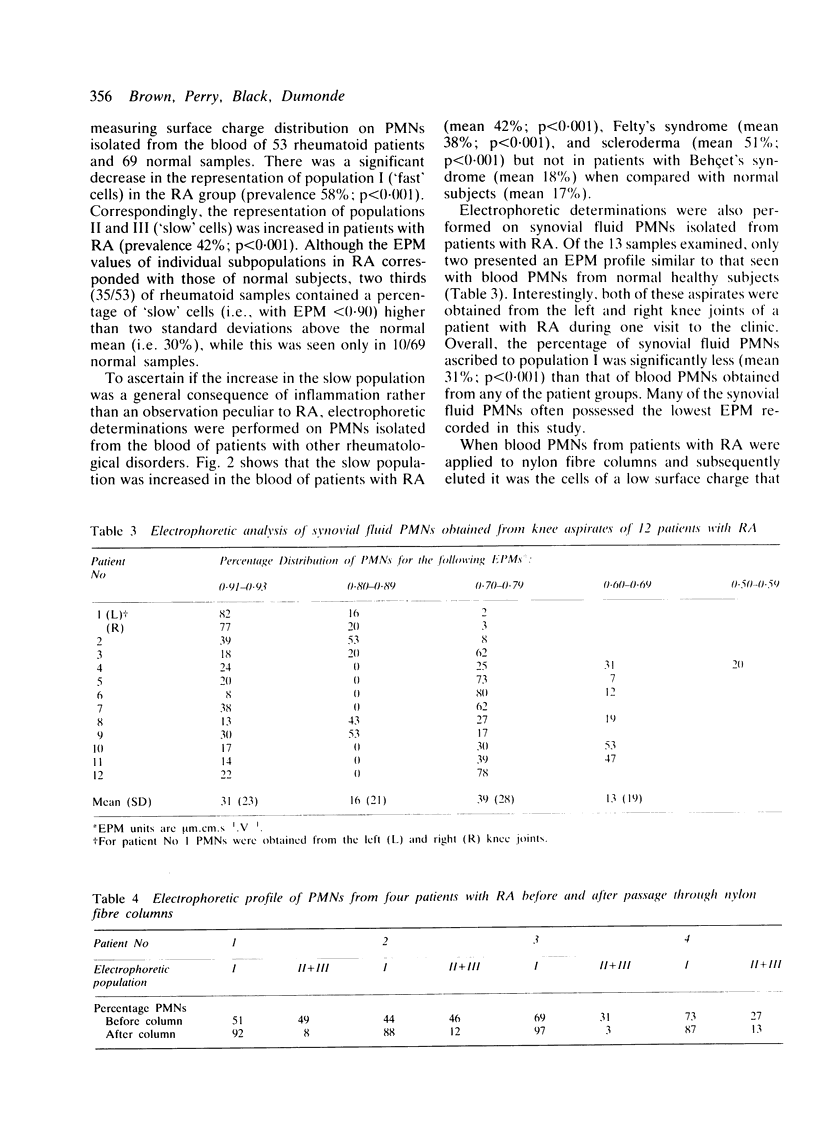
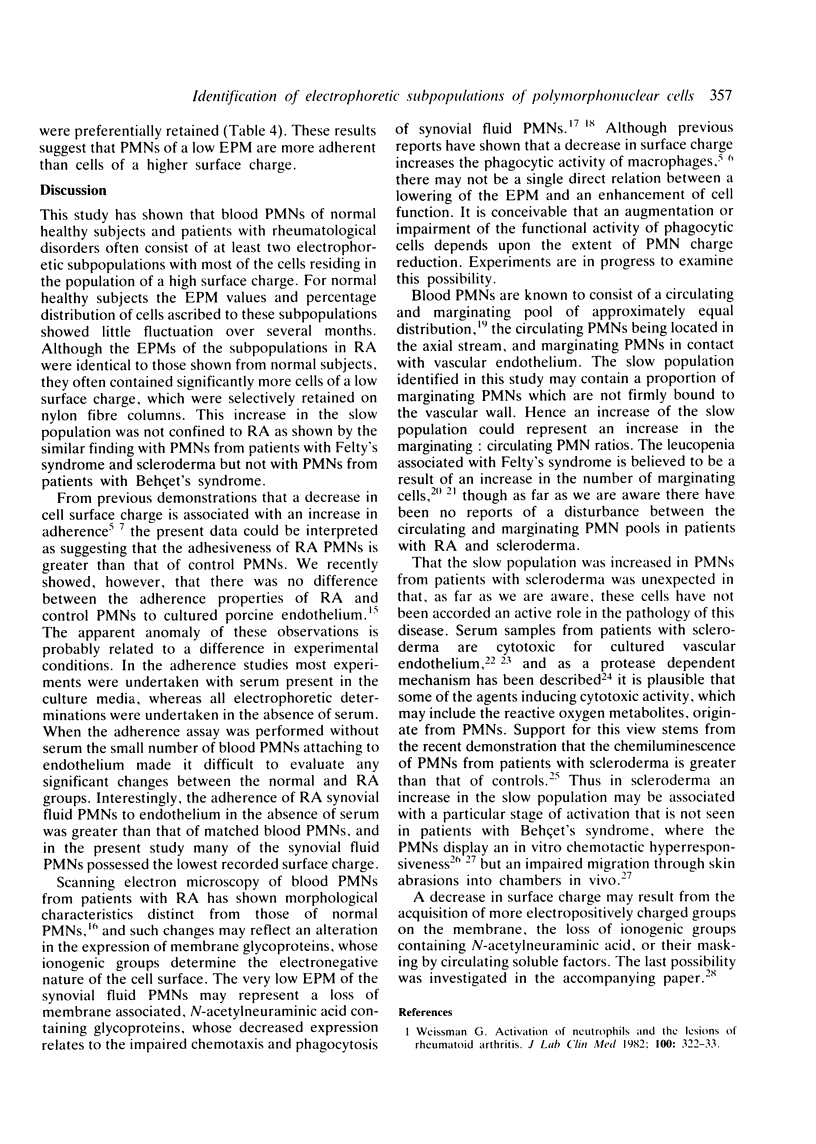
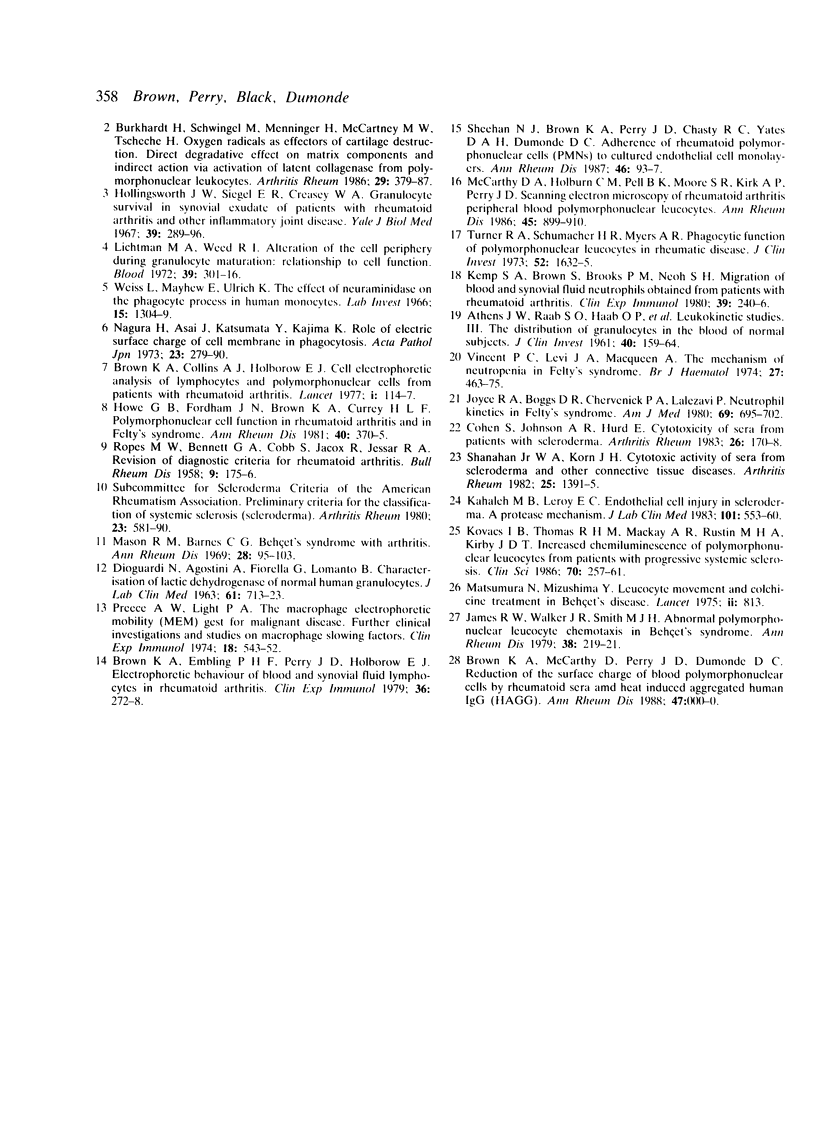
Selected References
These references are in PubMed. This may not be the complete list of references from this article.
- Brown K. A., Embling P. H., Perry J. D., Holborow E. J. Electrophoretic behaviour of blood and synovial fluid lymphocytes in rheumatoid arthritis. Clin Exp Immunol. 1979 May;36(2):272–278. [PMC free article] [PubMed] [Google Scholar]
- Burkhardt H., Schwingel M., Menninger H., Macartney H. W., Tschesche H. Oxygen radicals as effectors of cartilage destruction. Direct degradative effect on matrix components and indirect action via activation of latent collagenase from polymorphonuclear leukocytes. Arthritis Rheum. 1986 Mar;29(3):379–387. doi: 10.1002/art.1780290311. [DOI] [PubMed] [Google Scholar]
- Joyce R. A., Boggs D. R., Chervenick P. A., Lalezari P. Neutrophil kinetics in Felty's syndrome. Am J Med. 1980 Nov;69(5):695–702. doi: 10.1016/0002-9343(80)90420-9. [DOI] [PubMed] [Google Scholar]
- Kemp A. S., Brown S., Brooks P. M., Neoh S. H. Migration of blood and synovial fluid neutrophils obtained from patients with rheumatoid arthritis. Clin Exp Immunol. 1980 Jan;39(1):240–246. [PMC free article] [PubMed] [Google Scholar]
- Lichtman M. A., Weed R. I. Alteration of the cell periphery during granulocyte maturation: relationship to cell function. Blood. 1972 Mar;39(3):301–316. [PubMed] [Google Scholar]
- McCarthy D. A., Holburn C. M., Pell B. K., Moore S. R., Kirk A. P., Perry J. D. Scanning electron microscopy of rheumatoid arthritis peripheral blood polymorphonuclear leucocytes. Ann Rheum Dis. 1986 Nov;45(11):899–910. doi: 10.1136/ard.45.11.899. [DOI] [PMC free article] [PubMed] [Google Scholar]
- Nagura H., Asai J., Katsumata Y., Kojima K. Role of electric surface charge of cell membrane in phagocytosis. Acta Pathol Jpn. 1973 May;23(2):279–290. doi: 10.1111/j.1440-1827.1973.tb00792.x. [DOI] [PubMed] [Google Scholar]
- ROPES M. W., BENNETT G. A., COBB S., JACOX R., JESSAR R. A. 1958 Revision of diagnostic criteria for rheumatoid arthritis. Bull Rheum Dis. 1958 Dec;9(4):175–176. [PubMed] [Google Scholar]
- Shanahan W. R., Jr, Korn J. H. Cytotoxic activity of sera from scleroderma and other connective tissue diseases. Lack of cellular and disease specificity. Arthritis Rheum. 1982 Dec;25(12):1391–1395. doi: 10.1002/art.1780251201. [DOI] [PubMed] [Google Scholar]


